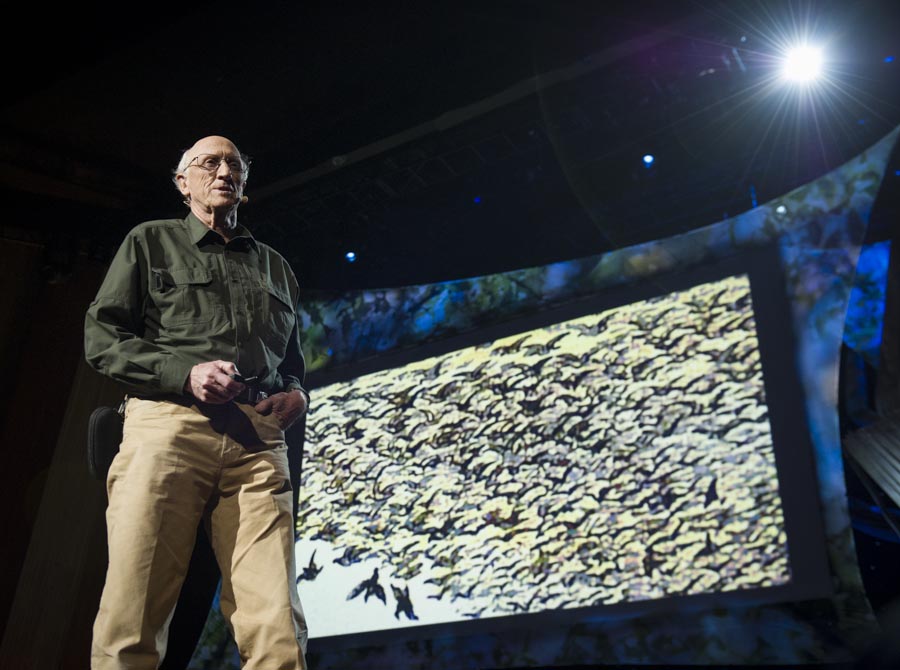Last time we saw Stewart Brand on the TED stage was in 2010, in his debate with Mark Z. Jacobson over whether the world needs nuclear energy. Brand, perhaps surprisingly, gave a passionate pro argument. But today he’s here for a very different — and potentially very controversial — purpose.
Extinction is not just death, but death for everyone you ever knew or anything remotely like anyone you knew. It’s permanent. … Or is it? Brand takes the stage today at TED to present ground-breaking research on bringing back extinct species.
In the past few centuries the Earth has lost dozens and dozens of species to extinction, including the Tasmanian tiger, the auroch and the passenger pigeon, which went from 5 billion to zero in just a few decades. But according to Brand, it’s possible to take tiny bits of old DNA from museum specimens and, using new technology, actually reassemble the entire genome — and maybe even reassemble the organism itself.
A team of people, including legendary geneticist George Church and newcomer Ben Novak, are working on bringing back the passenger pigeon, which was a keystone species that helped save the buffalo. Beth Shapiro has already sequenced the passenger pigeon, and Church believes it can be brought back with synthetic biology technology, which is accelerating at four times the rate of Moore’s Law. Since it’s now possible to make adjustments in DNA down to a single base pair, scientists can replace missing genes with alleles from a close relative. In this case, genes from the band-tailed pigeon could be used to engineer a passenger pigeon, the last of which, Martha, died in 1914.
The first de-extinction happened on the bucardo, a type of wild mountain goat. The last bucardo died out in 2000, but its ear was preserved, and in 2009 DNA from the ear was planted in a mother goat. The engineered bucardo died after 10 minutes due to a defect in its lungs.
Incredible things are possible to save the Earth’s species. Captive breeding in zoos and ecotourism are already helping; in 1981 there were 254 Central African mountain gorillas left, and today there are 880. Currently there are four non-breeding northern white rhinoceros left, and with cloning, says Brand, we can get them back.
But the critical question to ask is: Do we want extinct species back? Are we humans taking technology to its limits, and interfering unnecessarily in nature? Well, as Brand says, it’s our job to fix what we’ve already broken. In the past 10,000 years, we’ve made a huge hole in nature. It’s our fault that some of these crucial species have been completely wiped out, so we should dedicate our energy to bringing them back.
While talking on stage to Chris, Brand ends by saying firmly, “It may take generations but we will get the wooly mammoth back.” An amazing dream? Stay tuned and see — and watch the free livestream of TEDxDeExtinction on March 15.
Stewart Brand’s talk is now available for viewing. Watch it here»

Comments (22)
Pingback: Cloning: The Science of Resurrection | lizleafloor
Pingback: The best of the web | My Favorite 31 Talks From TED 2013